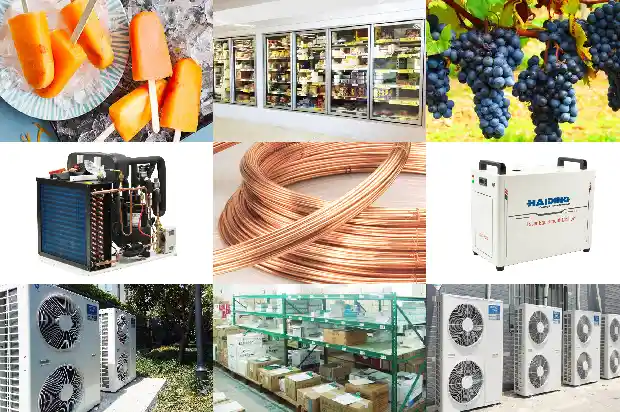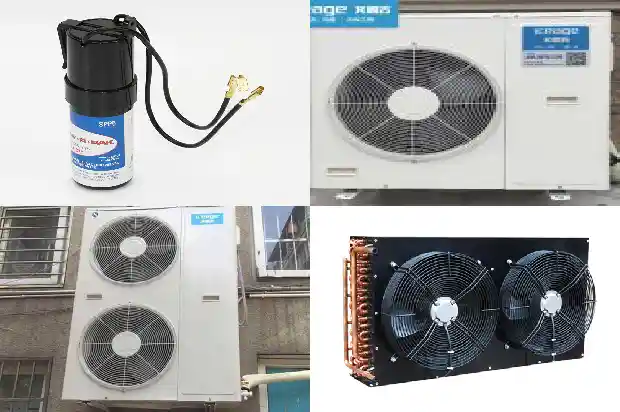What to Consider When Replacing R22 with Refrigerant R404A?
2025-02-20
When replacing R22 with refrigerant R404A, the following issues need to be considered:
- The most significant problem in replacing R22 with R404A is related to the lubricating oil. PVE ester - type oil must be used to replace the mineral lubricating oil for R22. Ester - type lubricating oil has a high affinity for water but poor dehydration ability.
Therefore, during use, it should be kept away from contact with outside air as much as possible. After opening the container, use it promptly, and seal it for storage after use. Keep it away from oxidants, strong alkalis, and strong acids, and store it in a well - ventilated area. When using it, avoid contact with skin and eyes, and do not inhale its vapor or spray.
- The discharge pressure of R404A refrigerant is approximately 1.2 times that of R22, and its mass flow rate is about 1.5 times that of R22.
The increase in discharge flow velocity leads to an increase in resistance. Generally, the heat - transfer capacity of the condenser should be increased by 20% - 30% compared to that of R22.
- At the same temperature, the saturated pressures of R404A and R22 are different.
Thus, the operating mechanism of the thermal expansion valve for R404A is different from that of R22. Meanwhile, due to the different compatibility of R404A refrigerant and its lubricating oil with the sealing materials, the sealing materials of the expansion valve also need to be changed accordingly. Therefore, when choosing a thermal expansion valve, a dedicated expansion valve for R404A should be selected.
- Since the saturated pressure of R404A is higher than that of R22, the design pressure of the pressure vessels in the system, such as the liquid receiver and the gas - liquid separator, needs to be adjusted to ensure safety. At the same time, the set values of the safety valves and fusible plugs installed on the system components also need to be changed accordingly. Under the condition of the same displacement, the gas density of R404A is approximately 50% higher than that of R22. Therefore, when designing the piping for R404A refrigerant, the selected pipe diameter should be larger than that for R22.
- For the same compressor, the current when using R404A is greater than that when using R22. Hence, the specifications of the compressor's AC contactor, thermal relay, and the wire diameter of the cable need to be adjusted. In terms of system protection, the set value of the high - pressure pressure switch should be adjusted from the original 2.45 MPa to 2.7 MPa.
- Because the saturated pressure of R404A is different from that of R22, the air - tightness test pressure should be higher than that of R22. Meanwhile, the vacuum degree of the system should be higher than that of R22, and the water content should be lower than that of R22. When charging the refrigerant, it should be charged in a liquid state to prevent changes in the composition of R404A.
- R404A is a zeotropic mixture. The composition concentration of a zeotropic mixture changes with temperature and pressure. This brings certain difficulties to the production, debugging, and maintenance of the refrigeration system, and also has an impact on the system's heat - conduction performance. Especially when the refrigerant leaks, all the refrigerant in the system needs to be emptied and replaced to ensure the proportion of each mixed component and achieve the designed refrigeration effect. Otherwise, the situation will get worse.
- Since R404A refrigerant and its lubricating oil have good compatibility with water, the requirements for moisture, residues, and cleanliness in the system are higher compared to those for R22 refrigerant. Controlling moisture and impurities in the R404A system is a relatively important indicator, and the corresponding filtering devices in the system need to be modified.
Related Articles
- Introduction to Inspection and Handling Methods for Refrigerant Leak in Cold Storage
- Four Combustible and Explosive Refrigerants: Precautions When in Use!
- Characteristics and Differences among Water System, Air System and Refrigerant System
- How to Judge the Refrigerant Charge Amount?
- How to Properly Extract Ammonia Refrigerant during Refrigeration Parts Repair
- Operating Principle and Standard Installation Steps of Multi - split Systems in Refrigerant Air - conditioning Systems
- Sensor for Refrigerant Leak Detection in Cold Chain Transportation
- Why Should Refrigerant Be Filled in Liquid Form? What Are the Filling Methods?
- What are the Cooling and Heating Pressures of an Air Conditioner? How to Calculate the Optimal Refrigerant Quantity?
- Maintenance Methods for Refrigerant Leak in Air - conditioner Outdoor Unit
- Operations and Precautions for Multi - split Air Conditioners: Blowing Debris, Air Tightness, Vacuum Drying, and Refrigerant Charging
- Multi-split air conditioner: Nitrogen charging for welding, pressure maintaining, vacuuming and refrigerant charging
- What Sensors Are Used for Leak Detection of R1234yf, the New Generation of Environmentally Friendly Refrigerant?
- How to Check Refrigerant Leakage in Air Conditioning System?
- Scheme for the Use and Safety of Ammonia Refrigerants
- Precautions for Replacing Refrigeration Compressor Refrigerant Oil
- Introduction to the Relationship between Refrigerants and Cold Storage Temperatures
- Determining the Adequacy of Refrigerant Dosage in Fluorine Refrigeration Systems
